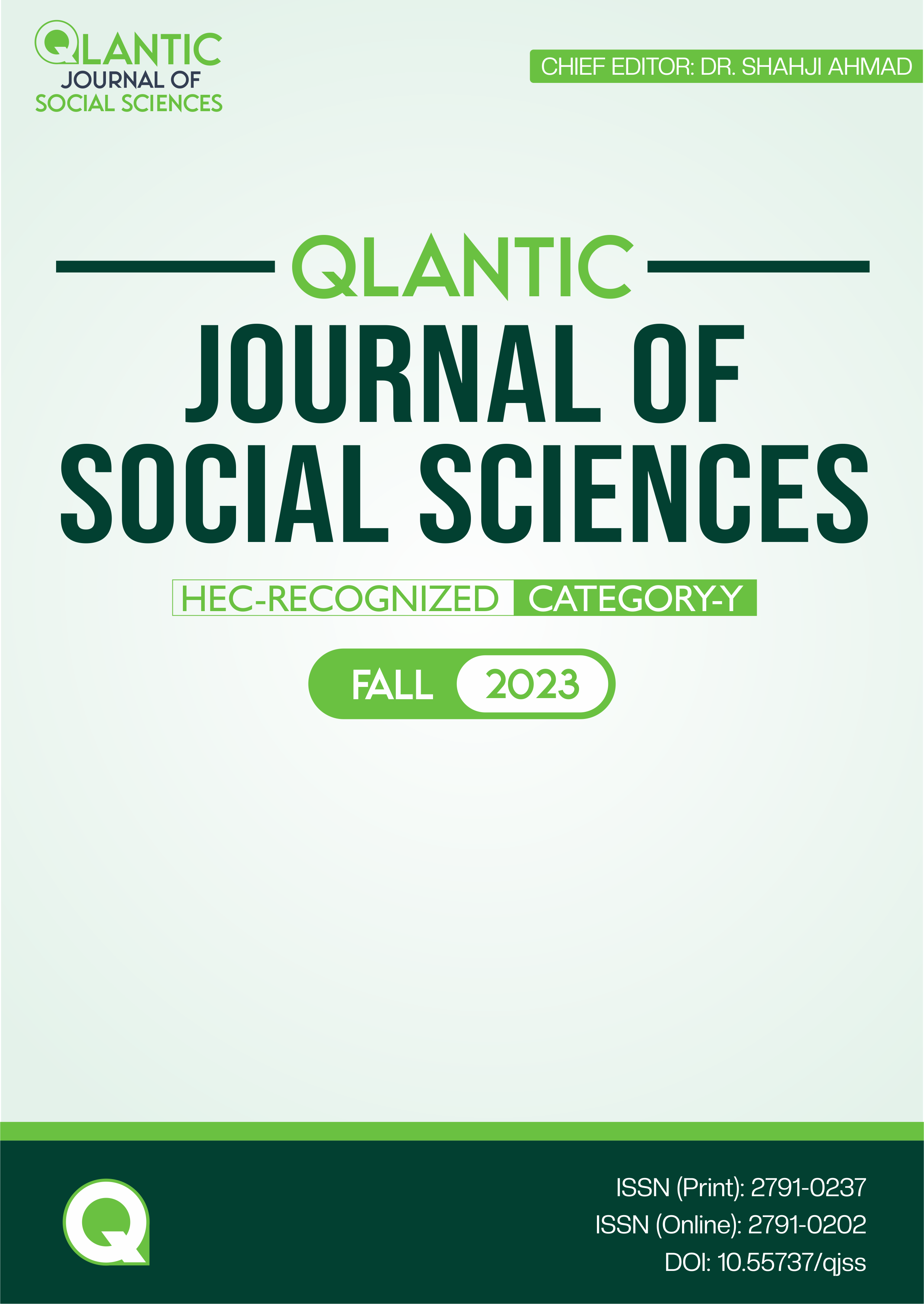Peace Reporting: Intra-afghan Dialogue and Role of Media
DOI:
https://doi.org/10.55737/qjss.755891410Keywords:
Taliban, Afghan Peace Process, Intra Dialogue, Peace FramingAbstract
John Gatling's model of journalism has been applied to coverage of newspaper reports on peace in Afghanistan in three leading English newspapers: the New York Times, Outlook Afghanistan, and the Daily Dawn. As an important pillar of the state, the media plays an important role in resolving disputes through its news reporting. By shaping it, they shape and edit people's opinions. In this way, the media is a powerful tool for shaping the nation's policy in international communication. So, the social responsibility theory of the press is discussed in this regard. The purpose of this study is to explore the coverage pattern of "terrorism and the ongoing war in Afghanistan" through print media in the framework of peace. News from three major newspapers shows that the coverage of the war and peace efforts in Afghanistan is dominated by the framework of peace journalism. Each story was coded for Peace Journalism as modeled by John Gatling. The three salient features of peace journalism that have been observed are the unbiased approach, the multidisciplinary approach, and the avoiding evil language. All three newspapers were objective and reported in their entire context. Most of the time, newspapers' approach was to resolve disputes rather than to direct them.
Downloads
References
Bandura, A. (1973). Aggression: A Social Learning Analysis. Englewood Cliffs, NJ: Prentice-Hall.
Bandura, A., Ross, D., & Ross, S. A. (1961). Transmission of aggression through imitation of aggressive models. The Journal of Abnormal and Social Psychology, 63(3), 575-582. https://doi.org/10.1037/h0045925
Coe, P. (2018). (Re)embracing social responsibility theory as a basis for media speech: Shifting the normative paradigm for a modern media. Northern Ireland Legal Quarterly, 69(4), 403-431. https://doi.org/10.53386/nilq.v69i4.186
Fourie, P. J. (Ed.). (2001). Media Studies: Institutions, theories, and issues (Vol. 1). Juta and Company Ltd.
Friedman, E., & Herfroy-Mischler, A. (2020). The media framing of blame agency in asymmetric conflict: Who is blaming whom for the 2014 Israeli-Palestinian peace negotiations failure? Journalism Studies, 21(13), 1873-1892. https://doi.org/10.1080/1461670x.2020.1797526
Jamal, U. (2020). The Taliban Rejects Ghani’s Intra-Afghan Dialogue Team: What Now? Thediplomat.com. https://thediplomat.com/2020/03/the-taliban-rejects-ghanis-intra-afghan-dialogue-team-what-now/
Jan, I., & Hussain, S. (2020). Media, War and Peace: Towards Peace Journalism Strategies in Pakistan. Global Regional Review, V(I), 340–345. https://doi.org/10.31703/grr.2020(V-I).37
Khan, B. Y., Naseer, F., & Ahmad, R. (2021). Impact of Taliban's takeover on the academic performance of Afghan scholars in Pakistan. Global Educational Studies Review, VI(II), 260-267. https://doi.org/10.31703/gesr.2021(VI-II).26
Masood, M. & Malik, S. (2020). Intra-Afghan Dialogue: The real path to peace. https://www.globalvillagespace.com/intra-afghan-dialogue-the-real-path-to-peace/
Nasar, M. A. (2020). The complexity of intra-Afghan Dialogue. Daily Times. https://dailytimes.com.pk/569153/the-complexity-of-intra-afghan-dialogue/
Rhodes, L. D. (2020). Peace Though Media. International Journal of Communication, 14, 5288–5291. https://ijoc.org/index.php/ijoc/article/viewFile/16458/3247
Wolfsfeld, G. (1997). Promoting peace through the News Media, Some lessons from the Oslo Peace process. Harvard International Journal of Press/Politics, 2(4), 52-70. https://doi.org/10.1177/1081180x97002004005
Wolfsfield, G. (2004). Media and Path to peace, Communication Society and politics. Cambridge University Press.
Published
Issue
Section
License
Copyright (c) 2023 Muhammad Riaz, Muhammad Jamil, Muhammad Noman

This work is licensed under a Creative Commons Attribution-NonCommercial 4.0 International License.




